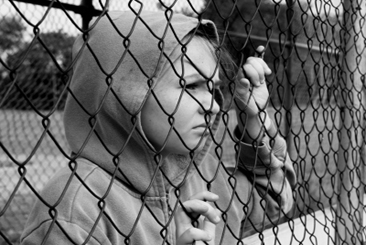|
|
| Changing Lives: Prevention and Intervention to Reduce Serious Offending |
| By The Office of Juvenile Justice and Delinquency Prevention |
| Published: 09/01/2014 |
 Decades of study have revealed much about risk factors for delinquency and crime. Individual characteristics and various factors can increase the probability of offending and may also predict substance abuse, teenage pregnancy, dropping out of school and other problems during adolescence and early adulthood. Because risk factors can predict future criminal behavior, prevention and intervention programs focus on mitigating them in a young person’s life. In addition, longitudinal studies have identified protective factors that inhibit criminal behavior. Programs that strengthen these protective factors can reduce the risk of delinquency. Most prevention and intervention programs that address risk factors have not been adequately evaluated, but high-quality studies are emerging. Randomized controlled trials and other rigorous studies have shown that many of these programs have positive effects on offending in addition to other outcomes.
Decades of study have revealed much about risk factors for delinquency and crime. Individual characteristics and various factors can increase the probability of offending and may also predict substance abuse, teenage pregnancy, dropping out of school and other problems during adolescence and early adulthood. Because risk factors can predict future criminal behavior, prevention and intervention programs focus on mitigating them in a young person’s life. In addition, longitudinal studies have identified protective factors that inhibit criminal behavior. Programs that strengthen these protective factors can reduce the risk of delinquency. Most prevention and intervention programs that address risk factors have not been adequately evaluated, but high-quality studies are emerging. Randomized controlled trials and other rigorous studies have shown that many of these programs have positive effects on offending in addition to other outcomes.
This bulletin focuses on the highest quality evaluation studies and research reviews. Grouped by program focus — family, school, peers and community, individual, employment — the bulletin assesses early childhood, juvenile, and early adulthood programs that have demonstrated measurable impacts on offending in early adulthood or up to age 29. Family-Based Programs Family-based programs target risk factors such as poor child rearing. Psychologists deliver some programs; public health professionals deliver others. This section discusses programs for young children and for adjudicated delinquents. Young Children Only a few programs that focus on early childhood have demonstrated that they have an impact on reducing offending in early adulthood. One was a parent training program that yielded positive results for young children but showed no impact for participants when they were between ages 16 and 21. The best-known home visiting program, and the only one with a direct measure of delinquency, is the Nurse-Family Partnership initially carried out in Elmira, N.Y. Four hundred first-time mothers were randomly assigned to receive home visits from nurses during pregnancy or during the child’s first two years or to a control group that received no visits. Nurses visited mothers in the experimental groups every two weeks, advising them on prenatal and postnatal care, infant development, the importance of nutrition, and avoiding smoking and drinking during pregnancy. Results showed that postnatal visits — particularly to poor, unmarried teenage mothers — were associated with a significant decrease in reported abuse and neglect during the child’s first two years. In a 15-year follow-up, significantly fewer experimental group mothers were identified as committing child abuse and neglect. By age 15, children of the higher risk mothers in the experimental group had significantly fewer arrests than controls. By age 19, girls in the experimental group had significantly fewer arrests, and girls of the higher risk mothers had significantly fewer children of their own and less Medicaid use. However, few effects were observed for boys. Adjudicated Delinquents Multisystemic Therapy This therapy, designed for serious juvenile offenders, may include individual, family, peer, school and community interventions, including parent training and other skill-building sessions. It is often referred to as family-based treatment. Three evaluations of randomized experiments have measured the impact of multisystemic therapy on offending in early adulthood (the experimental groups received multisystemic therapy).
This approach modifies patterns of family interaction through modeling and reinforcement to encourage clear communication and minimize conflict. A long-term follow-up of a randomized experiment involving 54 juvenile offenders compared family therapy with probation services. The mean age at treatment was 15.4 for the experimental group and 15.3 for the control group. Most were between ages 20 and 22 at follow-up. Family therapy participants reported a lower rate of rearrest compared with their control counterparts. Multidimensional Treatment Foster Care This approach includes both individual therapeutic care for adolescents in foster care and training in parent management skills. A short-term follow-up of a randomized experiment involving 81 serious and chronic female juvenile offenders compared multidimensional treatment with group care. The age at treatment was between 13 and 17 and at follow-up was between 15 and 19. Multidimensional care was more effective than group care as measured by days in locked settings, number of criminal referrals and self-reported delinquency. A two-year follow-up of a randomized experiment involving 79 adolescent males compared multidimensional treatment to group home care. The age at treatment was between 12 and 17 and at follow-up was between 16 and 19. Multidimensional treatment was significantly more effective than group home care as measured by referrals for violent offending and self-reports of violent behavior. Only 5 percent of participants in the multidimensional program had two or more criminal referrals for violent offenses compared with 24 percent of the group home adolescents. Click here to view the full report. |
MARKETPLACE search vendors | advanced search

IN CASE YOU MISSED IT
|


Comments:
No comments have been posted for this article.
Login to let us know what you think